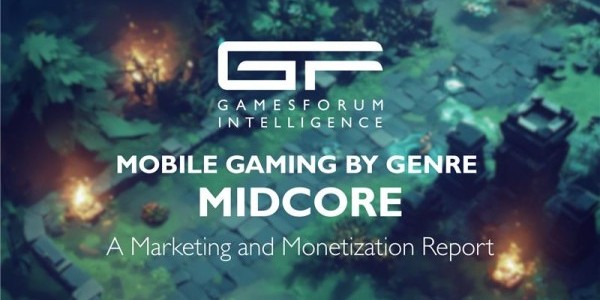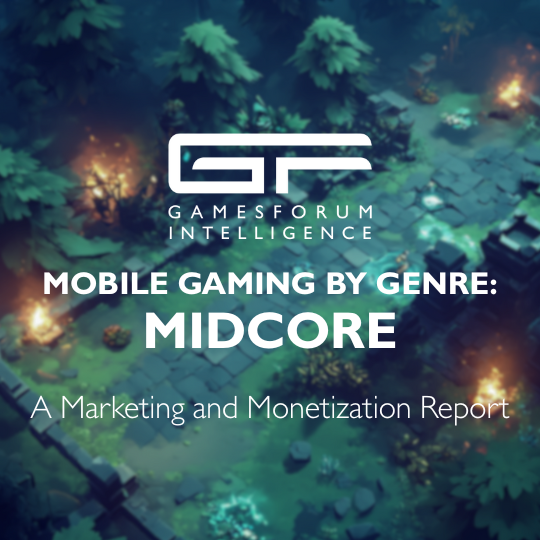Community Spotlight: Jade Graves on Leveraging Alternative IDs for Mobile Gaming’s Next Frontier

In this Community Spotlight, we sat down with Jade Graves, Senior Director of Business Development at MobileFuse, to explore the transformative role of alternative IDs in mobile gaming. As the landscape of digital advertising shifts with increasing privacy regulations and ID deprecation, Jade provides valuable insights on how these alternative identifiers can sharpen targeting strategies, enhance user engagement, and maximize effectiveness for both advertisers and publisher partners in the evolving mobile gaming ecosystem.
How can alternative IDs help with targeting the most relevant mobile gamers for brand advertising campaigns, maximizing effectiveness for publisher partners?
Alternative IDs are another form of IDs that still require user opt-ins. The key difference is that these IDs are not persistent across networks or tied to a device. They are typically derived from a user's email or phone number and anonymized to create a custom ID. Targeting varies by vendor; some, like RampID from LiveRamp, are audience-driven, while others, such as The Trade Desk’s open-source UID2, are used for unique targeting and tracking.
Alternative IDs extend beyond just targeting, as brands are actively testing these solutions in preparation for ongoing ID deprecation and increasing government regulations. For instance, MobileFuse has observed that even when an IFA is present in the ad request, the presence of an alternative ID can lead to a 300%+ increase in average fill rates. (Recent PR here). Just to note from a data and scale reference point - MobileFuse is the current leader when it comes to supporting alternative IDs in-app.
How do you see the evolving landscape of mobile gaming impacting brand advertising strategies over the next five years?
From an advertiser standpoint, as view time for gaming apps has increased over the past few years, so has the interest from brands wanting to advertise in games. From a game publisher’s perspective, there has been growing interest in the past couple of years to display more brand advertising, which enhances user experience and boosts retention. Given the branding focus vs serving competitive ads for other gaming apps, this will also naturally create less user churn. As game publishers develop more advanced methods to determine when to show performance ads versus brand ads, brand spending in gaming will continue to rise.
What are the key benefits for brand advertisers when partnering with mobile gaming publishers, and how can these partnerships be maximized?
The key benefits for brand advertisers partnering with mobile gaming publishers are scale and the opportunity to reach diversified and specific audiences. Given that games are inherently interactive, and engage users, this is great for brand ads as opposed to apps where users are not as engaging. MobileFuse is a leader in interactive ads such as expandable ads, playable, and reward, so gaming publishers are a great fit for our brand clients.
Gaming publishers can maximize brand advertising partnership opportunities by segmenting their audiences based on data that identifies users likely to engage with performance advertising versus brand advertising. This approach allows for optimization of what network to call without eroding overall top-line revenue.
Game players are power users, play often and great for retargeting. Also, given in-app game play, brand KPIs can easily be met across CTR, VSR, VCR, Viewabiltiy etc.
How can mobile gaming publishers leverage alternative IDs to enhance user targeting and engagement for brand advertisers?
Given that alternative IDs are not persistent or tied to a specific device, gaming publishers can leverage these IDs to enhance targeting and increase total revenue while remaining compliant with privacy regulations, as users must opt-in for the publisher to use their email or phone number. Publishers have a huge opportunity to support and cultivate their community by educating users on why this data is needed, as they often worry about causing friction with their user base. The simple answer is that publishers need to generate revenue to keep apps free. Since alternative IDs are not persistent across networks or tied to a device, users tend to feel more comfortable sharing this data, which is anonymized before creating the alternative ID.
ID deprecation will continue, and government regulations will only become stricter. While alternative IDs aren't the sole solution, publishers must educate their user base on why this data is needed, how it's used, and how it's protected. Without user opt-in for sharing IFAs or alternative IDs, revenue from both brand and performance advertising will decline.
In what ways can focusing on both mobile gaming and brand advertising create synergies that benefit gaming publishers' revenue and user retention?
The simple answer is that users dislike seeing repetitive performance ads, and gaming publishers, despite the obvious CPM advantages, should avoid showing ads for other games that might draw users away from their apps. In contrast, users are more receptive to brand advertising, especially when the brands align with their interests. Partnering with a top-tier network focused on brand advertising can help achieve this and has been proven to increase retention, particularly among loyal app users.
What challenges do you anticipate gaming publishers will face when integrating brand advertising and how can they overcome these obstacles?
The primary challenge lies in the mediation solution you use and the complexity of your overall ad stack. Generally, brand advertising doesn't compete with performance ads for video slots. If there's unsold inventory, brand video ads are a great option. For standard banner ads, brands can compete more directly.











